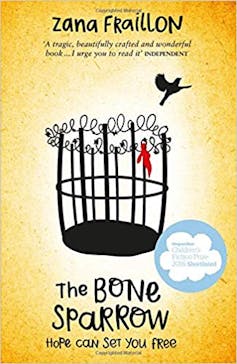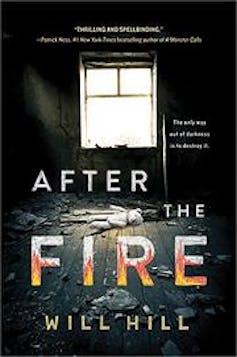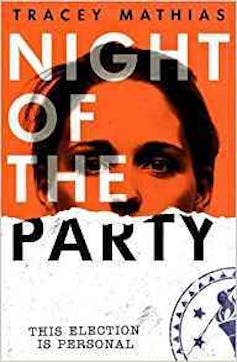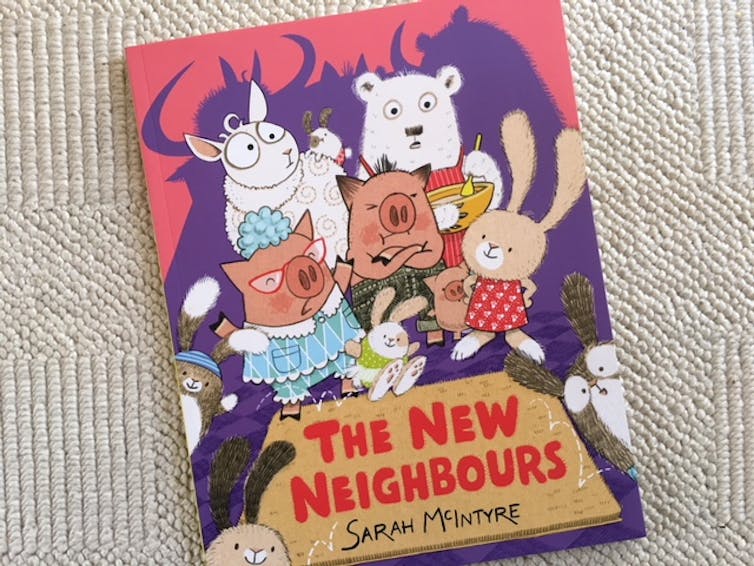In this confusing and often conflicted world, children’s author Gillian Cross has summed up what it is about reading fiction that is so important: “Good stories help us make sense of the world. They invite us to discover what it’s like being someone completely different.”
As the author of a children’s novel myself, I’m going to double down on this and say that if this is important for adults, it’s 100 times more important for children.
Children passionately want to understand what’s going on – and fiction is a potent way for them to do this. A study by education professor Maria Nikolajeva found that “reading fiction provides an excellent training for young people in developing and practising empathy and theory of mind, that is, understanding of how other people feel and think”.
In the wealth of recent fiction for children and young adults, here are ten powerful stories for young people, addressing some of the most important, and troubling, questions we face today.
1. The Bone Sparrow by Zana Fraillon (Orion)
Imagine being imprisoned for your whole life. Imagine growing up like Subhi.

The nine-year-old’s world ends at the diamond-shaped fence – the outer edge of the detention centre he is detained in with his Rohingya family in Australia.
Fraillon draws a vivid picture of life inside the fence – vulnerable people fleeing persecution, only to find – instead of the peace and sanctuary they so desperately need – indifference and hostility.
But Subhi finds hope in his friendship with an Australian girl from outside the fence. (Age: 11+)
2. The Big Lie by Julie Mayhew (Red Ink)
What if Germany had won World War II and the UK was now part of a Third German Reich? This is a coming-of-age story with a difference – 16-year-old Jessika is a talented ice-skater in a high-ranking REICH?family.
But her friendship with subversive, courageous and desirable Clem threatens everything: her family, her future, and her very life. This is a story that paints the dangers of totalitarianism in vivid language. (Age: 12+)
3. Boy 87 by Ele Fountain (Pushkin Press)
Fourteen-year-old Shif lives in a country that conscripts its children into the army. The country isn’t named, but may be in Africa. He wants to play chess with his best friend Bini and race him home from school. But the army comes calling and the two must flee.
Shif experiences at first hand the brutality of a totalitarian government, then the trauma of migration and trafficking. Despite this, the story manages to be hopeful. (Age: 12 +)
4. The Jungle by Pooja Puri (Ink Road)
Sixteen-year-old Mico is surviving his life in the Jungle refugee camp in Calais. Without anyone to look out for him, he must look out for himself, living on his wits and his luck. Using careful research, Puri shows us what life is like as a refugee, owning nothing, not even the clothes on your back or the blanket you sleep beneath.
She shows us the desperation and terrible lengths refugees will go to, to try to find a home. But when Mico meets Leila, we see, too, the hope – and the risk – that friendship brings. (Age: 12+)
5. After the Fire by Will Hill (Usborne)
Moonbeam has lost her mother and she only knows life inside The Fence – it’s a life controlled by cult leader Father John.

But one night a devastating fire burns that life to the ground – the buildings, the people, the leader are all gone and only Moonbeam and a handful of children survive. Moonbeam and the others must now discover the world beyond the fence.
Can she do this when Father John has told her to trust no one outside? Using the WACO siege as his source material, Hill explores the power of brainwashing and cult identity.
Moonbeam’s search is for a truth she can stand by now, and for the mother she thinks must be dead. (Age: 12+)
6. I Am Thunder by Muhammad Khan (Macmillan)
Written in the voice of its smart and self-deprecating heroine, British Muslim Pakistani teenager Muzna, this is both a coming-of-age novel and a thriller. Muzna navigates her life at home and at school, working out how to have her own identity and her own ambitions, not those imposed by her parents, religion, school or friends.
And, as her relationship with Arif develops, the story becomes a thriller, and the stakes become very high. (Age: 13+)
7. The Territory trilogy by Sarah Govett (Firefly Press)
What happens when the sea levels rise? Govett imagines a flooded world with dwindling resources and not enough dry land for everyone. Choices have to be made, about who stays on the dry territory, and who is banished beyond the fence, to the dreaded Wetlands. But when 15-year-old Noa finds herself beyond the fence, she discovers that not everything the adults have been telling her is true. (Age: 13+)
8. Night of the Party by Tracey Mathias (Scholastic)
Following Britain’s withdrawal from Europe, a far-right Nationalist party has come to power.

Only those born in Britain (or BB as they are known) are allowed to live legally – everyone born outside the country is subject to immediate arrest and deportation and failing to report illegals is a crime.
Mathias has set her thriller in a British dystopia that is more scarily plausible than ever.
The young protagonist Zara is an illegal living in this scary new Britain – and falling in love with Ash might be the most dangerous thing she could do. (Age: 13+)
9. Moonrise by Sarah Crossan (Bloomsbury)
It’s ten years since Joe saw his brother Ed – and now Ed is on death row, facing execution for the murder of a police officer. What do they know of each other now? Ed says he’s innocent of the murder, but everyone else believes he’s guilty.
Crossan’s verse novel explores a single summer, perhaps Ed’s last, as 17-year-old Joe struggles to understand what has been done to his brother – and to himself. (Age: 13+)
10. The New Neighbours by Sarah McIntyre (David Fickling Books)

The only picture book in the list, McIntyre’s delightfully illustrated story explores how intolerance and scaremongering can run like a mad fever through a community. When new neighbours move in to the tower block, hysteria builds quickly, until finally the other animals discover the truth about their newest neighbours. (Age: 2+)

